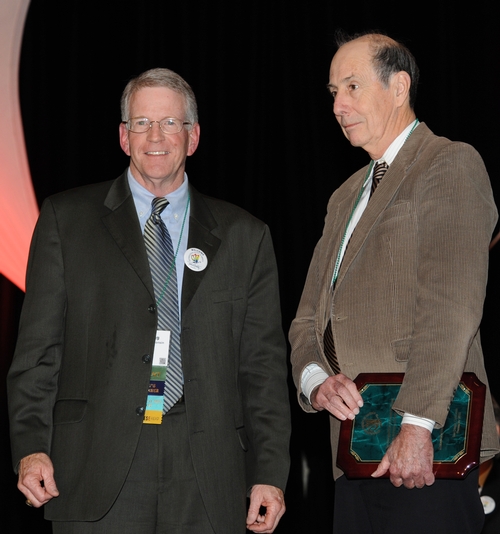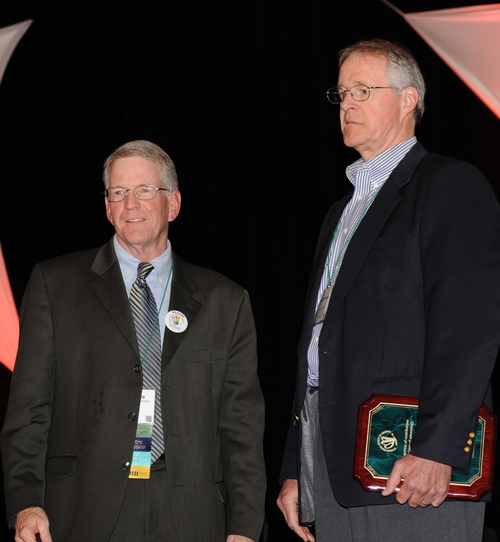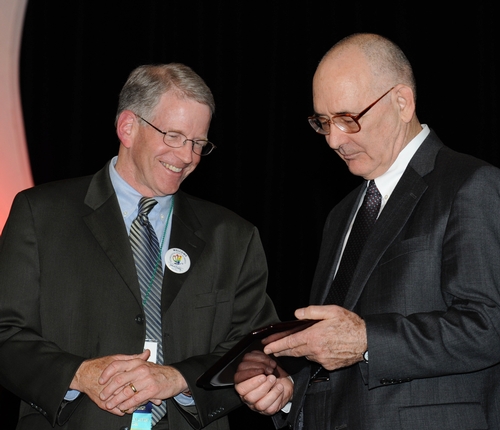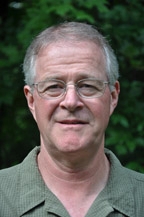- Author: Kathy Keatley Garvey
Three University of California entomology professors were among the 10 newly elected Fellows of the Entomological Society of America (ESA) honored at the organization's 58th annual meeting, held Dec. 12-15 in San Diego.
Their selection speaks highly of the caliber of UC professors. No more than 10 Fellows are selected for the honor every year from the 6000-member organization, and this year the UC system has three.
They are Bruce Hammock and Thomas Scott of UC Davis and Thomas A. Miller of UC Riverside.
Hammock, a distinguished professor of entomology, studies "inhibitors of epoxide hydrolases as drugs to treat diabetes, inflammation, ischemia and cardiovascular disease," the ESA statement of his work reads. "Compounds from the UC Davis laboratory are in human trials."
That in itself--from bench to bedside--is unique in the annals of entomology.
Hammock, a member of the UC Davis Medical Center's Cancer Center and the National Academy of Sciences, is not only a distinguished professor but a highly sought-after mentor who draws students to his lab from all over the world.
Scott, who directs the UC Mosquito Research Laboratory at Davis, is one of the key "go-to" researchers studying dengue. When he's not in his UC Davis lab, you can usually find him doing research in Peru, Thailand or Mexico. Scott is especially known for his research on mosquito ecology, evolution of mosquito virus interactions, epidemiology of mosquito-borne disease, and evaluation of novel products and strategies for mosquito control and disease prevention.
Scott is a fellow of the American Association for the Advancement of Science and is a past president of the Society for Vector Ecology. He serves as a subject editor for the American Journal of Tropical Medicine and Hygiene. (More on Hammock and Scott on the UC Davis Department of Entomology website.)
ESA officials pointed out that Miller's research "has included structure and function of the insect circulatory system; mode of action of insecticides; insect neuromuscular physiology; physiology, toxicology and behavior of pink bollworm in cotton fields; transgenic insects; and applied symbiosis for crop protection and biopesticides for crop protection. "
Miller's university teaching includes insect physiology, insect toxicology and first year biology. Current projects include control of bush cricket pests of oil palm trees in Papua New Guinea, oversight of field trials of transgenic grapevines with resistance to Pierce's disease, biotechnology for control of desert locust, and regulatory control of insect transgenic technologies.
In 2003 Miller was awarded the Gregor J. Mendel Medal for Research in Biological Sciences by the Czech Academy of Sciences. That's just one of his many honors.
Indeed, the list of honors and accomplishments for these three UC entomologists could easily fill a book!



- Author: Kathy Keatley Garvey
The Entomological Society of America this morning announced the 2010 Fellows. Each year the governing board can elect up to 10 members as Fellows of the 6000-member society.
The highly prestigious honor acknowledges outstanding contributions in one or more of the following: research, teaching, extension, or administration.
This year...drum roll...three UC professors were among the 10 selected: Bruce Hammock and Thomas Scott of UC Davis and Thomas Miller of UC Riverside.
They will be inducted as Fellows at the ESA’s annual meeting, to be held Dec. 12-15 in San Diego.

Hammock and his laboratory are exploiting inhibitors of epoxide hydrolases as drugs to treat diabetes, inflammation, ischemia, and cardiovascular disease. Compounds from the UC Davis laboratory are in human trials.
Diabetes, arthritis and heart patients are closely following his research.

Scott’s research focuses on mosquito ecology, evolution of mosquito-virus interactions, epidemiology of mosquito-borne disease, and evaluation of novel products and strategies for mosquito control and disease prevention.
He's a noted authority on the mosquito-borne disease, dengue.

Current projects include control of bush cricket pests of oil palm trees in Papua New Guinea, oversight of field trials of transgenic grapevines with resistance to Pierce's disease, biotechnology for control of desert locust, and regulatory control of insect transgenic technologies.
These three entomologists have published widely--Hammock alone has 763 peer-reviewed publications.
Indeed, their accomplishments could fill several books.
Read more about Bruce Hammock and Thomas Scott on the UC Davis Department of Entomology website, and about Thomas Miller on the UC Riverside website.

- Author: Kathy Keatley Garvey
Last weekend we spotted a San Francisco-bound car sporting a bumper sticker that read simply:
"I brake for bugs."
Indeed.
Bugs rule. Bugs are cool. Bugs are definitely worth stopping for (especially if it's the Bohart Museum of Entomology at UC Davis which houses seven million specimens).
Lot of brakin' going on.
Which brings us to what the Royal Entomological Society, United Kingdom, did.
The society invited 23 distinguished entomologists and entomologists-in-training to write a daily blog about bugs during National Insect Week. The blogs are online--and let's hope this really catches on.
Two of the distinguished entomologists are from the University of California: professor Peter "Pete" Cranston of the UC Davis campus and professor Thomas "Tom" Miller of the UC Riverside campus.
They're "bug bloggers" extraordinaire.
Cranston, recently awarded an honorary membership in the Royal Entomological Society, teaches teaches systematic entomology and biodiversity at UC Davis and serves as the co-editor of the Royal Entomological Society’s journal Systematic Entomology. His research interests include the systematics, ecology and biogeography of aquatic insects, particularly the Chironomidae (non-biting midges).
His blog bio indicates: "In his childhood years in the West Midlands of the UK in the 1950s, he was allowed, even encouraged, to roam the countryside with friends and siblings, and he developed a fascination with aquatic wildlife--birds, mammals and the larger insects. His formal education built on these interests, thanks to the support of a high-school biology teacher who encouraged him to undertake fieldwork projects."
Cranston went on to earn his bachelor's degree in biology at the University of London. For his doctorate, also obtained from the University of London, he studied the development stages (larvae and pupae) of the dominant group of aquatic flies--the chironomid midges.
If you're an entomology student, you probably have a copy of the popular textbook, The Insects: An Outline of Entomology, written by Cranston and Penny Gullan, also an entomology professor at UC Davis.
As for Tom Miller, he teaches insect physiology, insect toxicology and first-year biology at UC Riverside. He earned his doctorate in entomology at UC Riverside in 1967. He then served a year as a research associate at the University of Illinois and a year as a NATO postdoctoral fellow at Glasgow University before joining the UC Riverside faculty in 1969.
Miller's research interests: the structure and function of the insect circulatory system; the mode of action of insecticides; insect neuromuscular physiology; physiology, toxicology and behavior of pink bollworm in cotton fields; transgenic insects; applied symbiosis for crop protection; and biopesticides for crop protection.
Miller received the coveted Gregor J. Mendel Medal for Research in Biological Sciences in 2003 from the Czech Academy of Sciences.
Take a look at their blogs. You'll find them fascinating. Here's the direct link to Cranston's blog. Here's the direct link to Miller's blog.
They, no doubt, brake for bugs.



